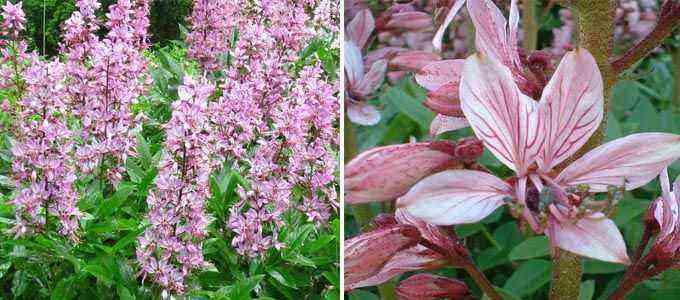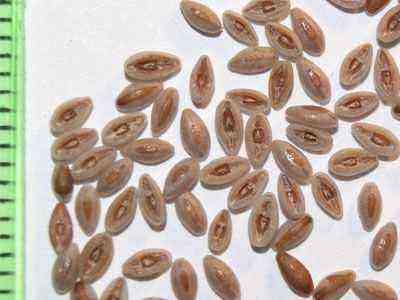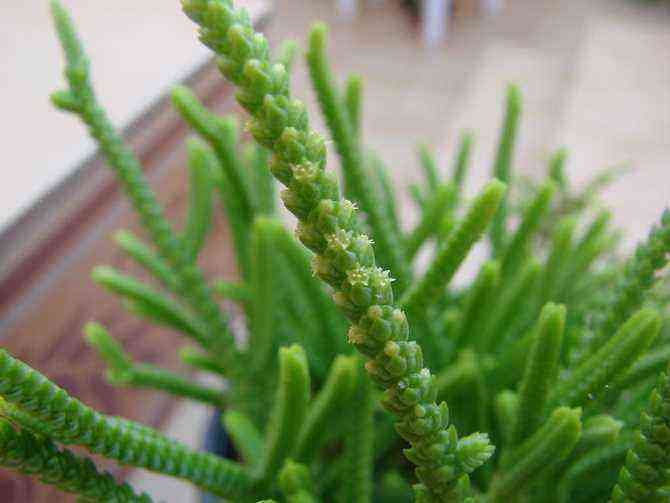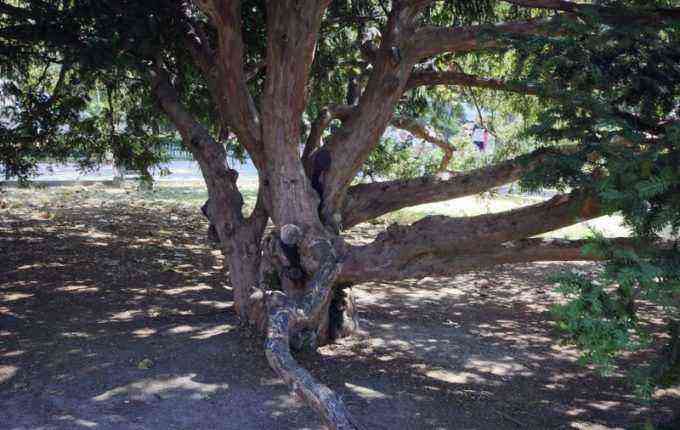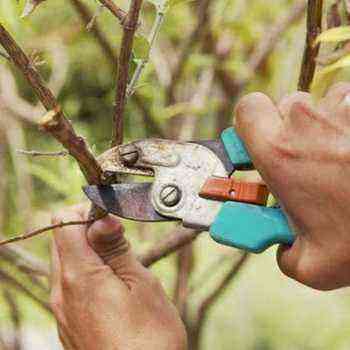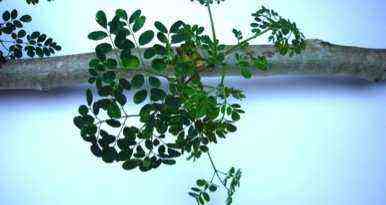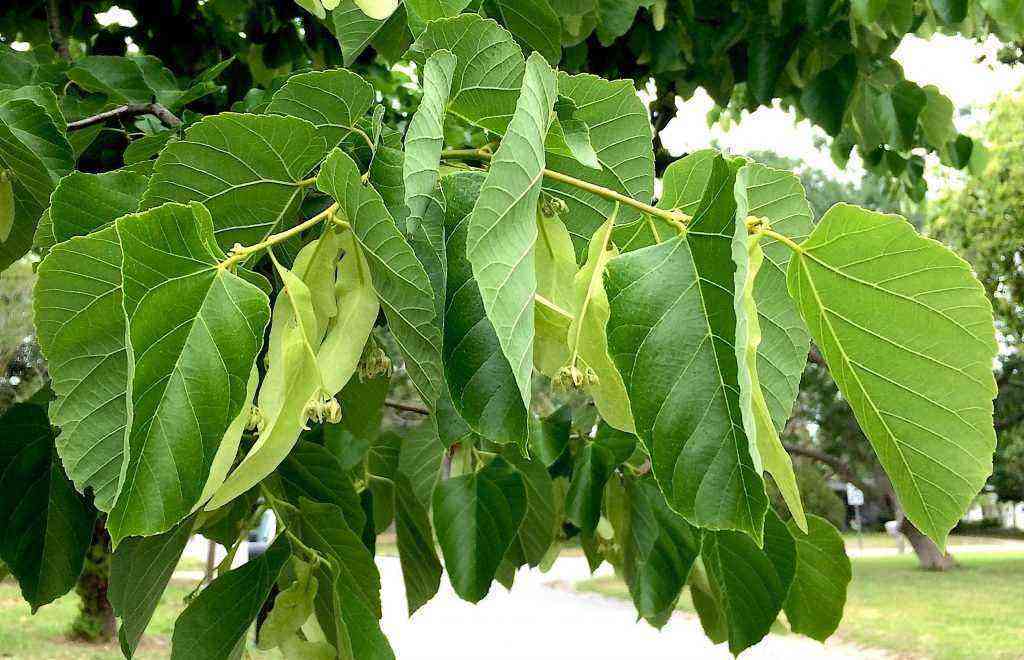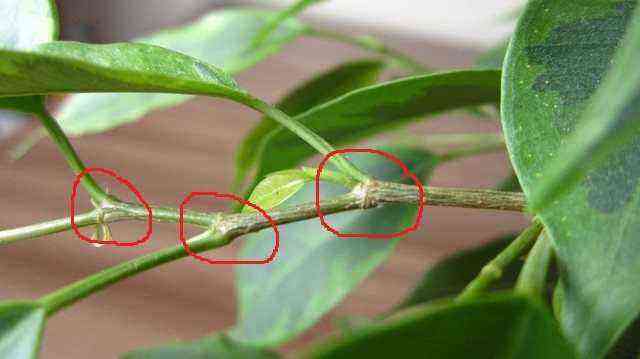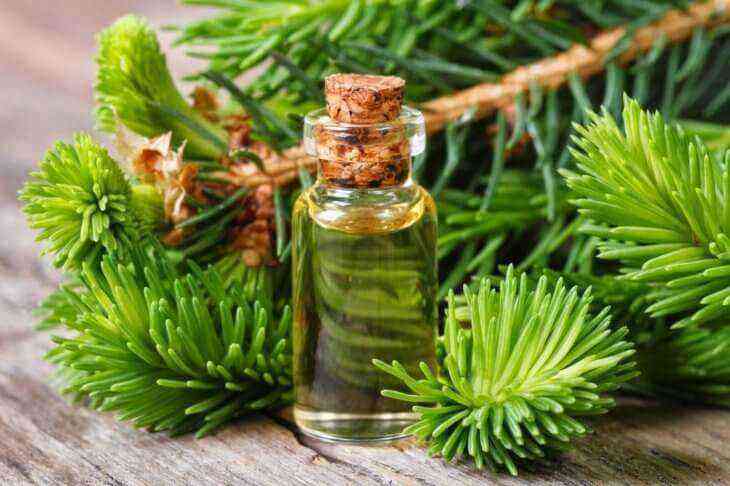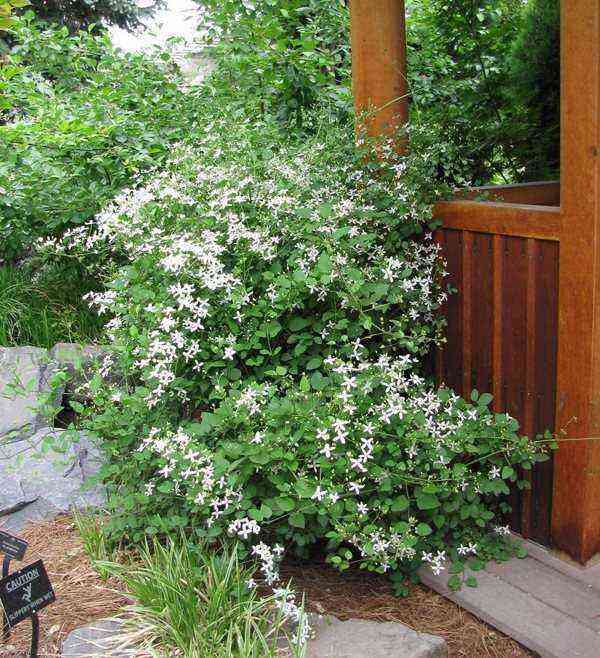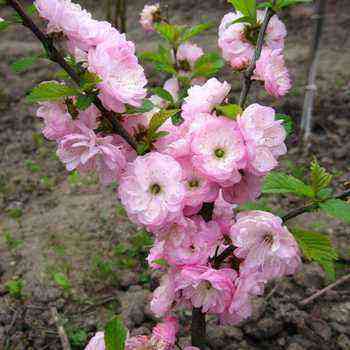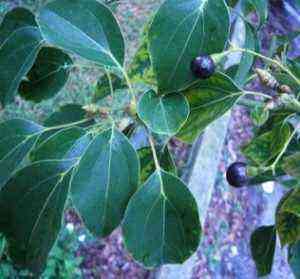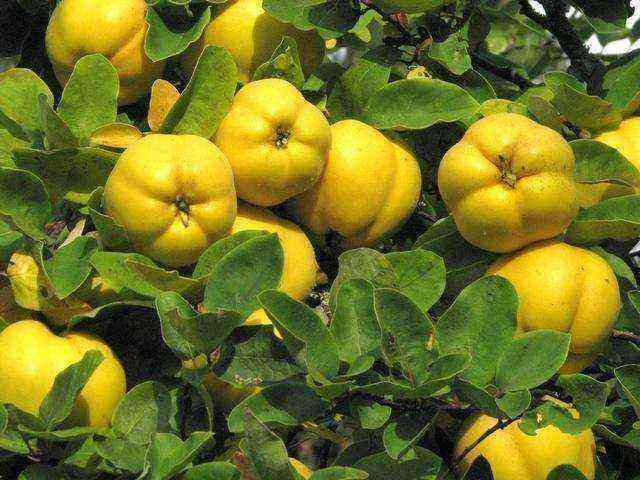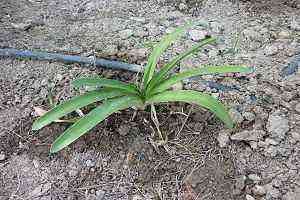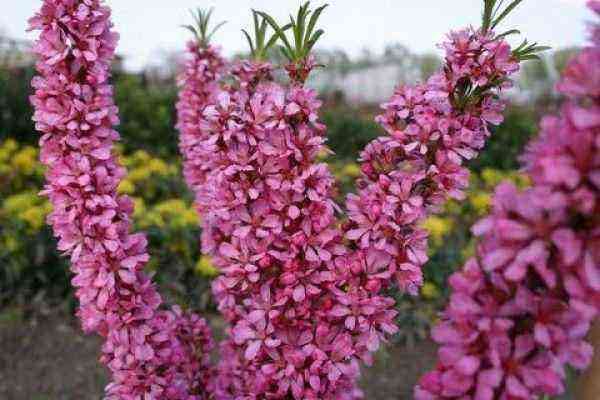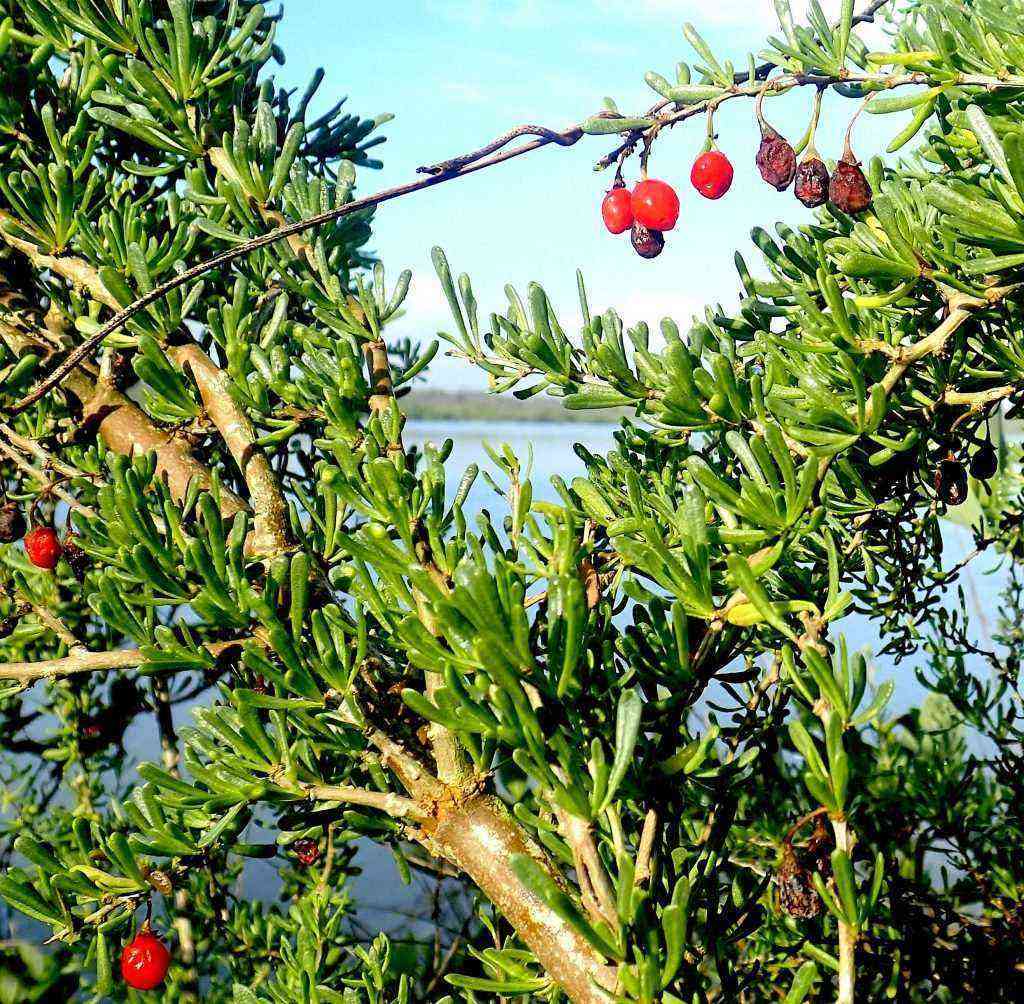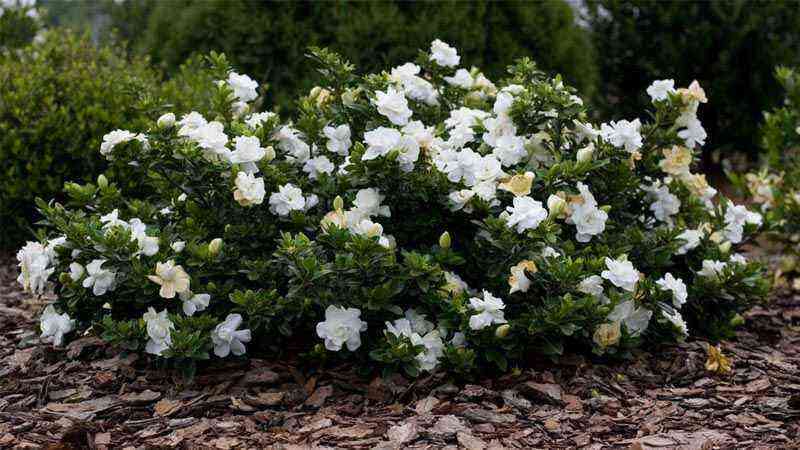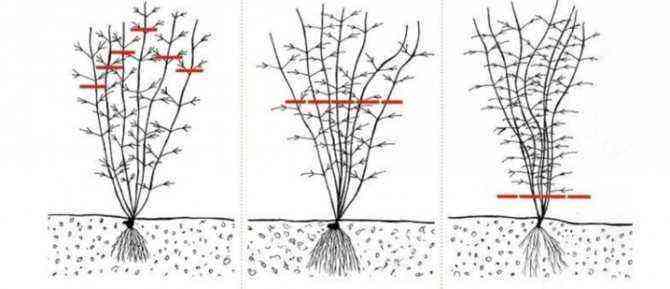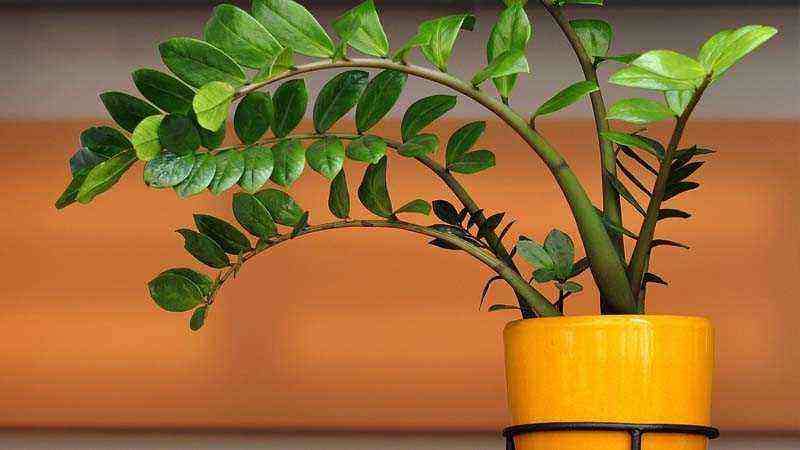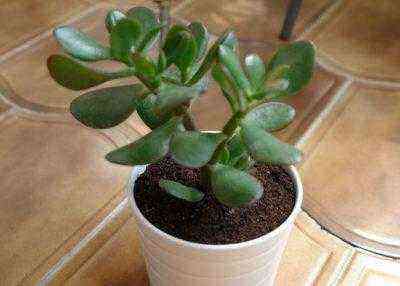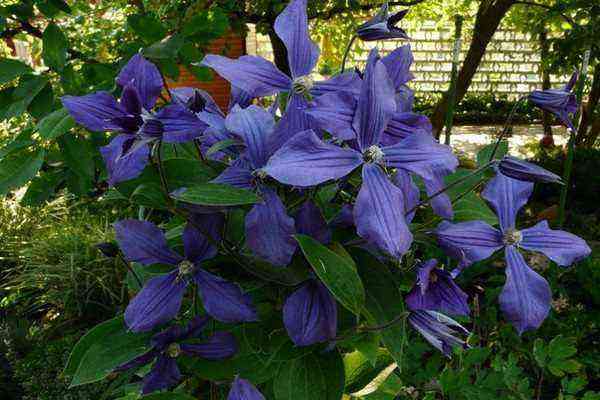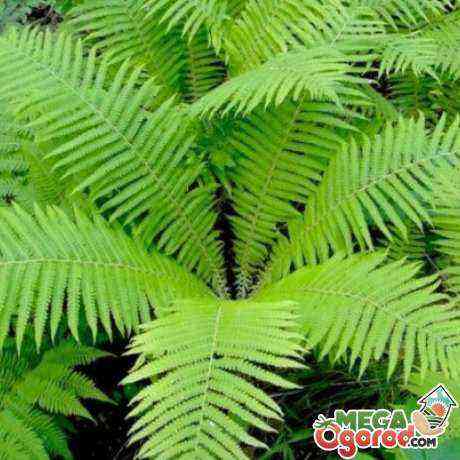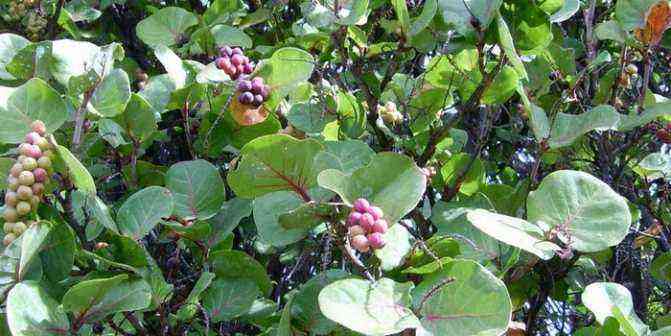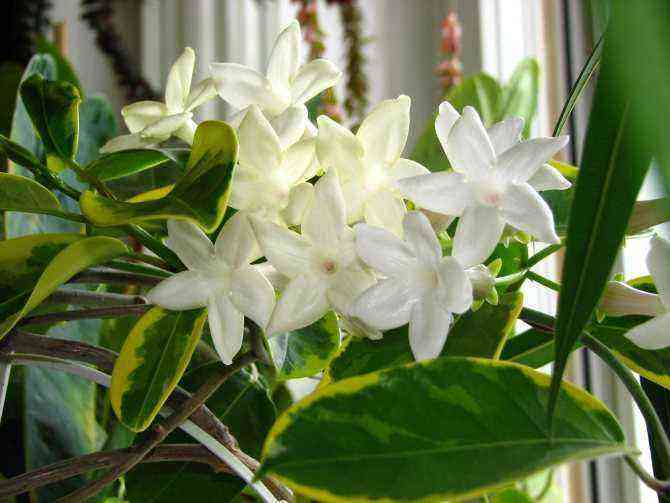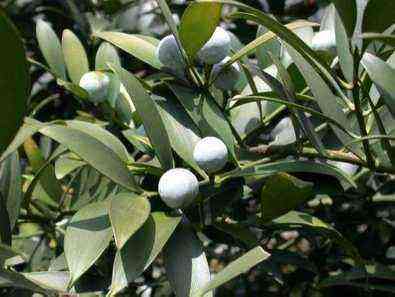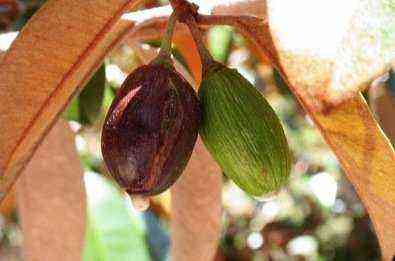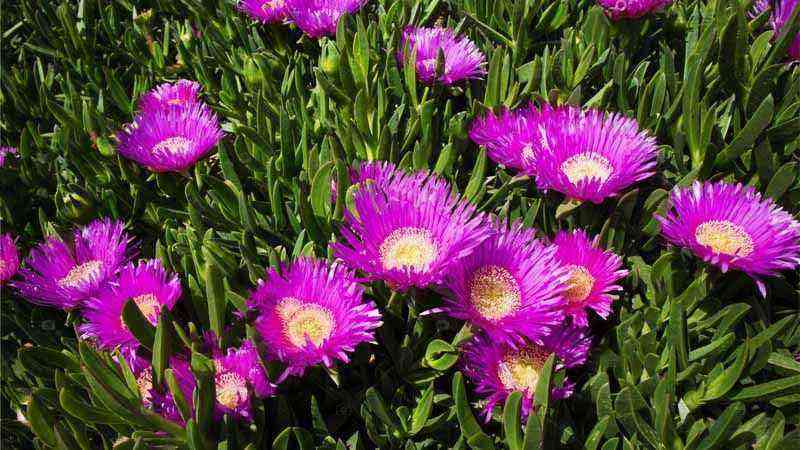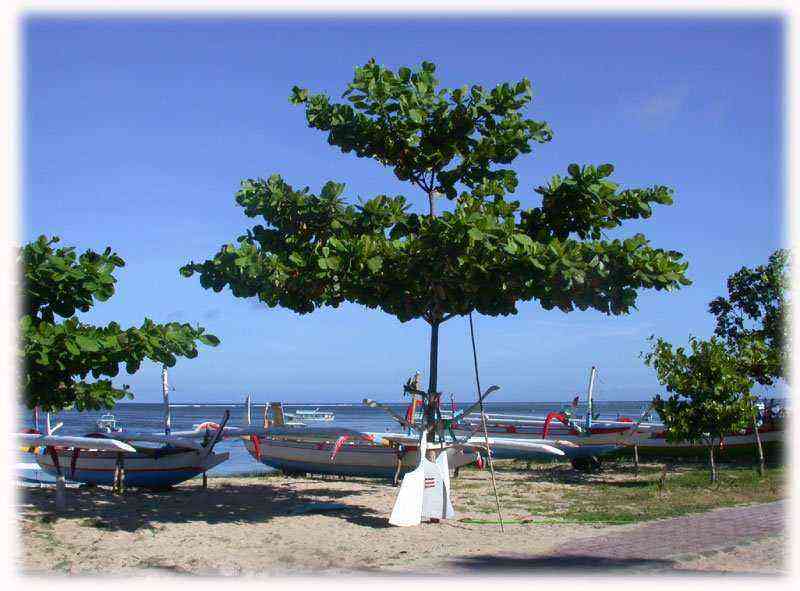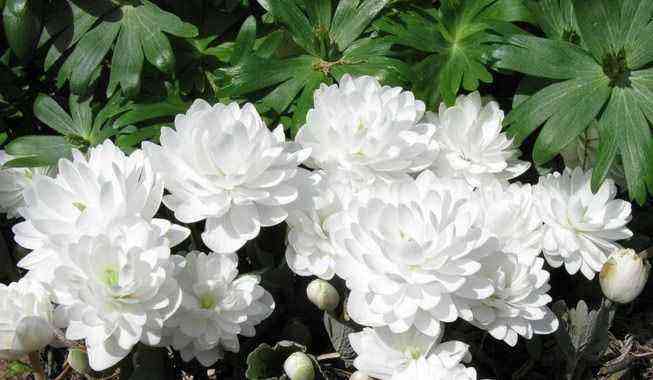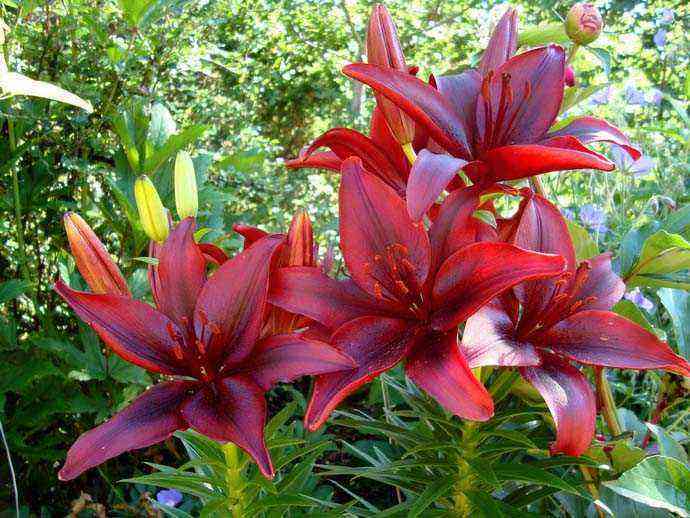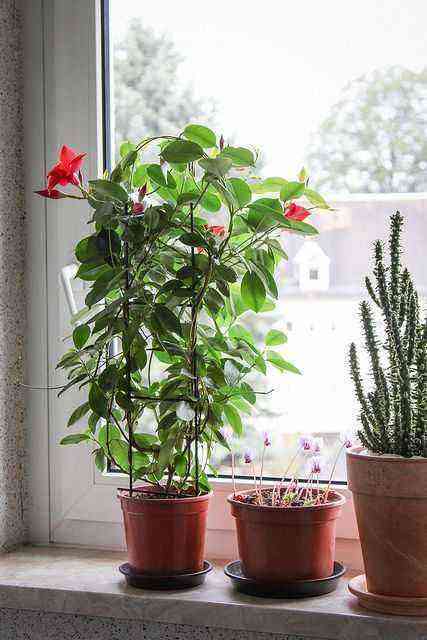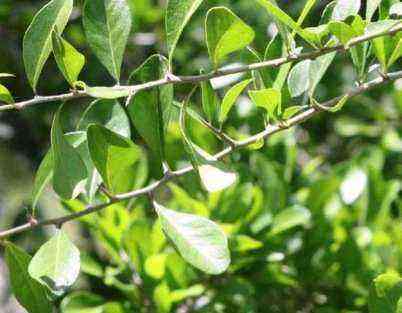Juniper Juniperus
Also known as sprawling juniper. The natural habitat is considered to be the central and northern part of North America.
The shrub can be found in the United States and Canada near small rivers, in coniferous forests, on mountain slopes, etc.
The horizontal juniper is an evergreen coniferous shrub with long branches that are pressed to the soil surface. The shoots are colored blue-green; at the onset of the first frost they acquire a brown tint.
Leaves on reproductive shoots are needle-shaped, prickly, receding from the branches by no more than 6-7 mm. Juniper also has scales-shaped leaves that are oval in shape with a slight taper at the end.
These leaves are small in size and tightly nestle on the branches. On the bush, cones are constantly forming, which have a blue-green tint. Each cone berry contains 4 seeds.
Did you know? Juniper has existed on planet Earth for over 50 million years.
Introduced into the ornamental garden culture in the middle of the XNUMXth century. Today it is often found in botanical gardens and arboretums. In amateur gardens, for decorative purposes, it began to appear quite recently, so the horizontal juniper has just begun to gain its popularity.
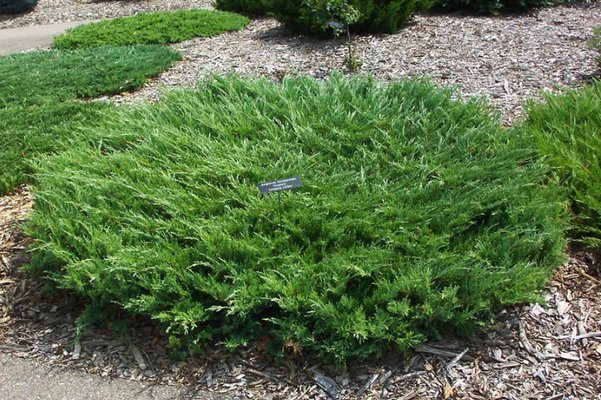
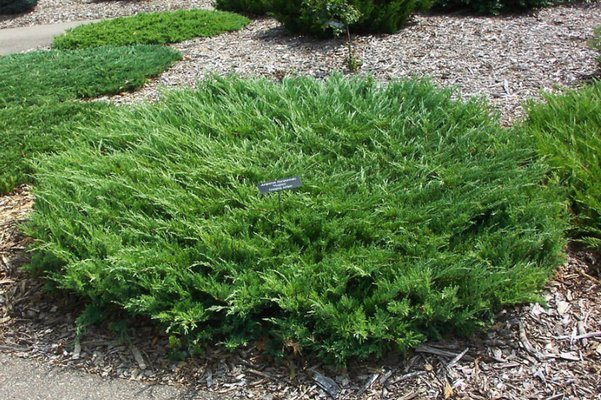
The shrub is very beautiful in early spring, because it is then that its needles acquire a steel shade, which is the main decorative quality of conifers. It will look beautiful on slopes, rocks, near small bodies of water, etc.
Learn more about planting horizontal junipers.
Juniper has good frost resistance, grows normally in urban conditions, is not very demanding on the composition of the soil, but develops slowly. Prefers sunny or semi-shady places, moderately moist soil and high air humidity.
How to plant?
A dwarf decorative pine purchased in a nursery must be properly planted. If you plan to grow in a pot, the procedure will be as follows.
A prepared ceramic or plastic container with a diameter of 10-15 cm, in the bottom of which holes are made for drainage, is poured over with boiling water in order to prevent bacterial contamination.
Drainage in the form of expanded clay or gravel is laid at the bottom. The tablets of activated carbon are stacked on top. Soil filling is in progress.
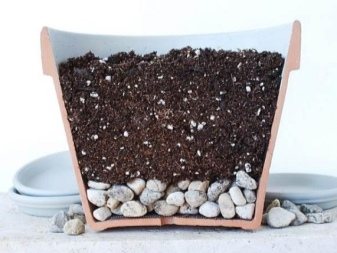
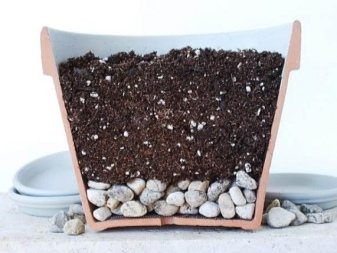
Fertile soil is prepared from a mixture of equal amounts of coarse sand and leafy earth or peat. The soil is poured in a slide in the center of the pot.
A seedling removed from a container with roots is freed from the soil. Old dry or rotten roots are removed. Sections are processed with activated carbon powder. The seedling is placed in a container with prepared soil, sprinkled with earth.
After the transplant is completed, the dwarf pine is sent to a semi-shady place for up to 2 weeks. The plant is abundantly watered, sprinkled. It is worth considering that for growing dwarf forms, it is recommended to take pots with a smaller diameter than those used in the nursery. Then the growth of the seedling will be inhibited.
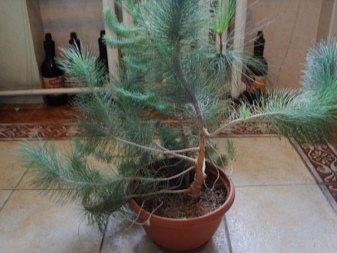

Pine Mugus
The mountain pine Mugus is widespread in the mountainous regions of the Alps and the Balkans. In its natural habitat, this plant can reach a height of 2-3 m, but the width of its crown exceeds the height and is 3-4 m.
It is because of this shape that this coniferous plant is referred not to trees, but to shrubs. The Mugus pine has short shoots that extend upward.
For a year, the shrub can add only 10-12 cm in height, and 12-14 cm in width. The diameter of the needles on the shoots varies from 3.5 to 4.5 cm. The needles have a very beautiful dark green color with a small sheen of metal.


Cones give the mountain pine a special decorative appearance, but they appear only 8-9 years after planting. Cones have the shape of a cut cone 3-6 cm long, painted in all shades of brown.
The mountain pine Mugus is a drought-resistant plant, however, with abundant summer watering, the needles acquire bright decorative effects. The tree can winter in the central regions of Russia without any special decorative losses.
The best place to plant is in a well-lit area with moderately compacted soil. Shady areas can cause the Mougus pine to become less resistant to disease.
The plant is not particularly demanding on the composition of the soil, but when planting, it is advisable to add a little river sand and peat to the hole. The pine shoots are strong, so they can easily withstand a large amount of snow in the winter.
Dwarf mountain pine – a popular plant among gardeners who like to decorate a bonsai-style landscape on their site. The plant will go well with other coniferous shrubs and trees when decorating alpine slides and rocky gardens.

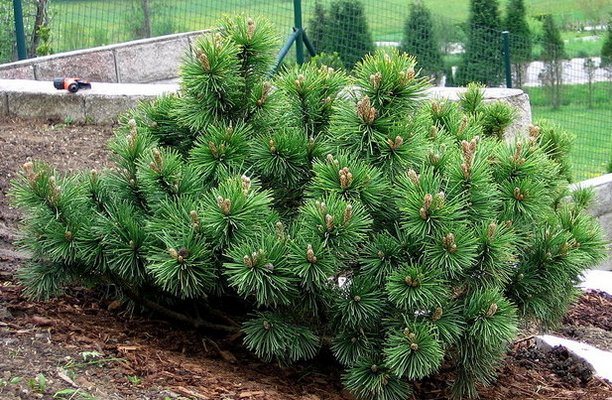
What a pine tree looks like: photo and description of the appearance of the tree

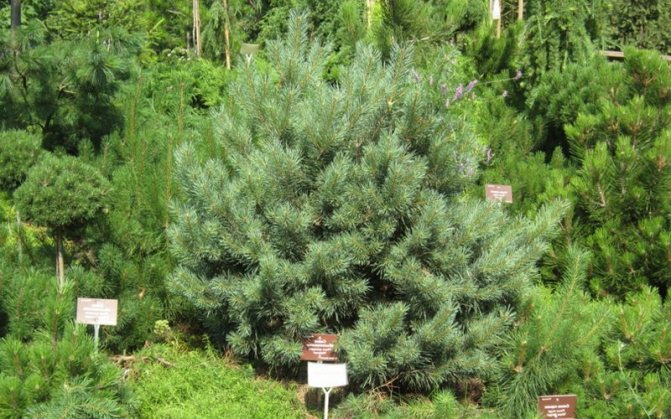
Pine of all biological species is an excellent component of landscaping a large area. What do pines look like in the wild?
This is an evergreen monoecious tree of the conifer family with a rounded, broad-pyramidal or umbrella-shaped crown; with scaly or smooth bark from almost white to black-brown. The needles are long, in bunches. Pine shoots of two types: elongated and shortened from gray-green to yellowish-brown.
Pine flowers are male and female. Male flowers in the form of spikelets are collected at the base of the shoots of the current year and sit in the axils of scaly leaves. Anthers are numerous, pollen with air sacs, which allows it to be carried by the wind over long distances. Female cones, single or in groups, sit on the tip of the branches.
Flowering and pollination occurs in spring. The seeds in the cones ripen in 1,5-2 years and spill out when they crack.
Spruce Maxwelli
This beautiful ornamental coniferous plant does not grow more than one meter in height. The diameter of its crown can reach 2 m. The shrub grows very slowly, and can reach its maximum size only after 15-20 years.
The crown of the Maxwelli spruce is quite thick, has a slightly pyramidal shape. Shoots are small, evenly distributed throughout the plant. The needles cover the shoots very densely, grow radially, and have a yellowish-green color.
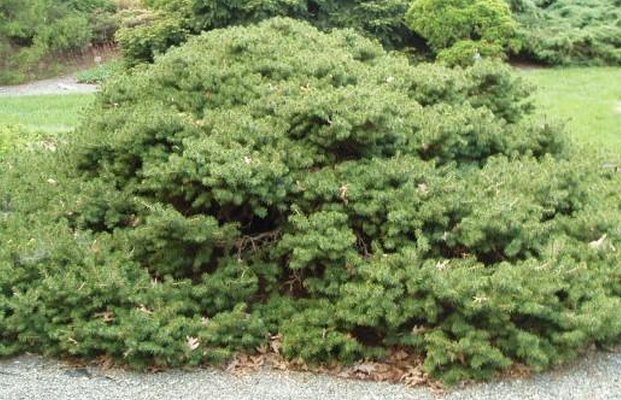

On the bush, very small cones are formed, which, unfortunately, cannot be admired, since, due to their small size, they are practically inaccessible to the human eye.
Important! It is best to plant Maxwelli spruce in early spring. Do not forget to make a good drainage system at the bottom of the planting hole.
Spruce Maxwelli can grow on almost any type of soil, it is unpretentious to acidity, however, the plant tolerates excessively wet and dry soils with difficulty. The shrub is resistant to soot and soot.
Many gardeners grow this spruce in pots that decorate alleys, terraces and gardens. The plant is frost-resistant, prefers sunny places, likes high air humidity.
Spruce Maxwelli is often used to design various decorative compositions. It looks great along with other deciduous and ornamental shrubs.
This dwarf spruce will be a bright decoration for alpine slides, rocky gardens and other landscape compositions.
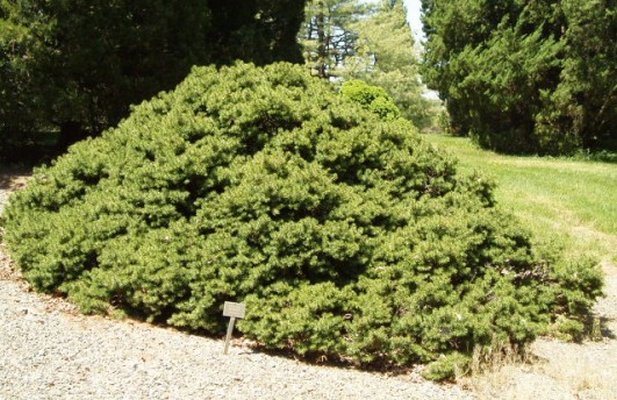
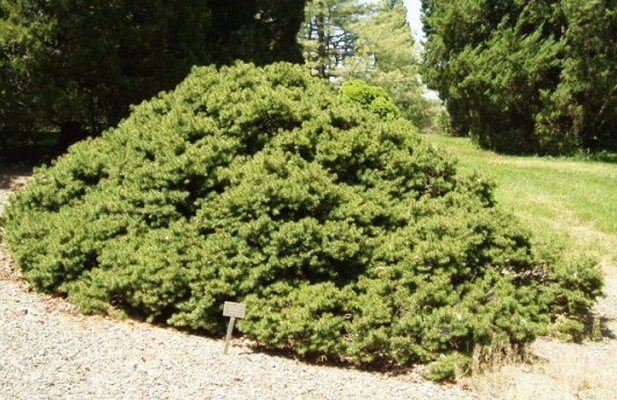
Varieties for planting in the garden
To find the perfect variety, you need to take into account the design of the garden, the soil and personal wishes of the owner.
The following varieties are especially often used for planting in the garden:
- Mops(Midget, Mini);
- Benjamin;
- Hnizdo;
- Pillow;
- Scherwood Compact;
- Green ball;
- Jezek;
- Litomysl;
- Kostelnihek and many others.
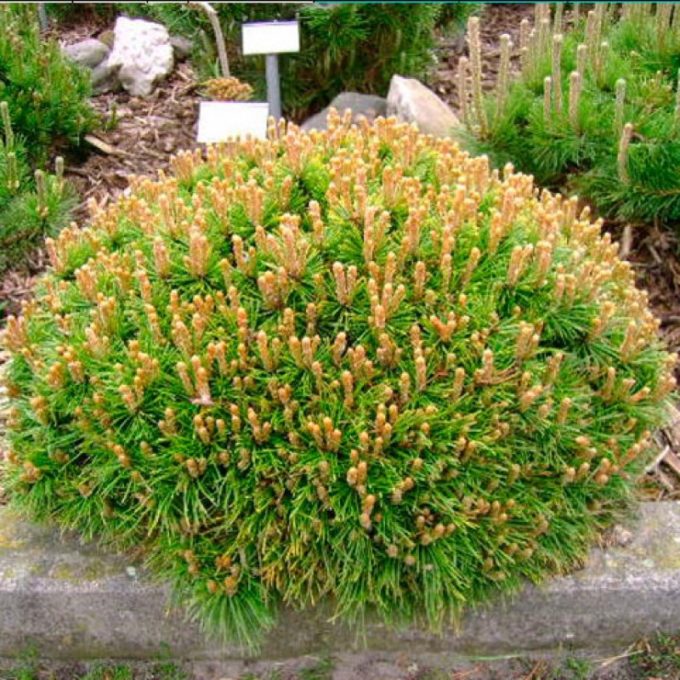
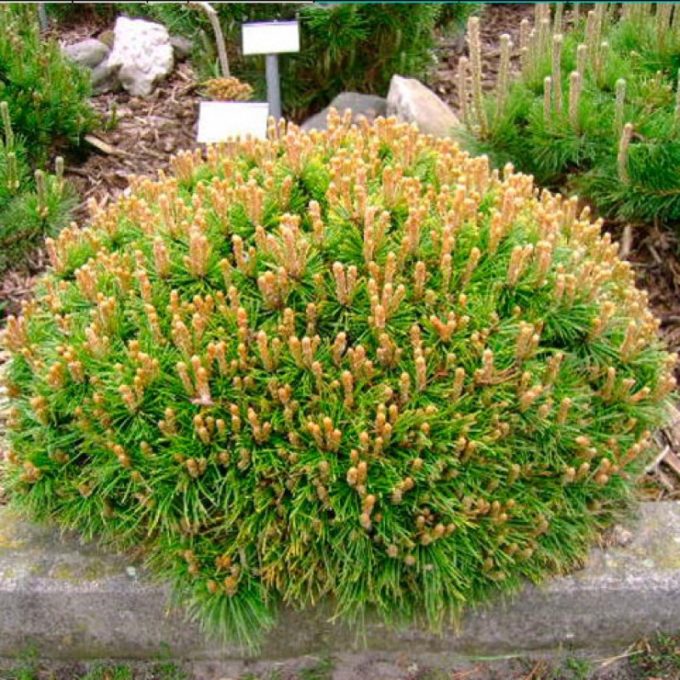
Red cedar
This coniferous shrub belongs to the Cypress family. Natural habitat of Virginia juniper: mountainous and rocky areas of Canada and the USA.
There are about 70 species of this shrub, most of which are capable of reaching a height of 30 m. The average life span of the Virginia juniper under normal conditions is about 500 years.
Young plants have a dense green crown, shaped like an egg. The needles of the plant are small, densely growing, scaly-shaped. In the summer, the needles are distinguished by the extraordinary beauty of a green hue, however, upon the arrival of winter, they turn brown.
Check out these types of juniper: Siberian, Chinese, Andorra compact, Cossack.
Juniper cones have a spherical shape, they do not exceed 3 mm in diameter. Colored in the color of a ripe plum, they form in the second year after planting. Pine fruits remain on the plant until the onset of the first frosts, only then they fall off. The trunk of the bush is strong enough, does not give in to rotting. In the USA and Canada, pencils are made from some varieties of Virginia juniper, for which the plant has received the nickname “pencil tree” among the people.
Juniper came to the territory of Russia about 200 years ago, since then it has been used in decorative design at palaces and estates.
Did you know? Juniper is able to release a large amount of phytoncides, which kill all pathogenic bacteria in the air. An area of 1 hectare planted with juniper is capable of releasing about 30 kg of phytoncides in one day, and this is enough to completely cleanse a small town from bacterial contamination.
Today, this coniferous plant is very popular among people engaged in landscape and decorative design. Juniper Virginsky will be an excellent decoration for a coniferous alley, rocky garden or alpine hills.
However, when the shrub reaches 40 years of age, its decorative value sharply tends to zero, as the lower branches begin to dry out. In this case, the junipers, which served as decorations for gardens and parks, begin to be cut, and new young plants are planted in their place.
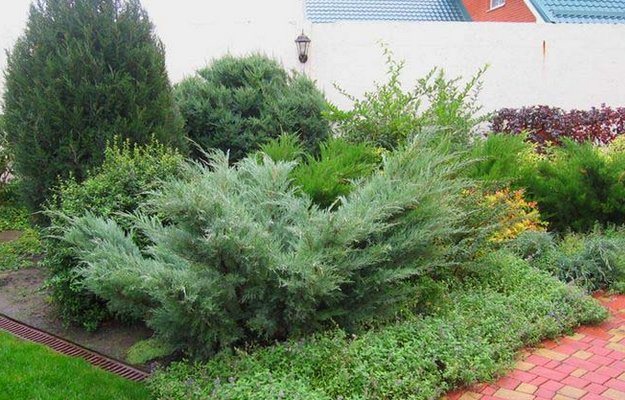
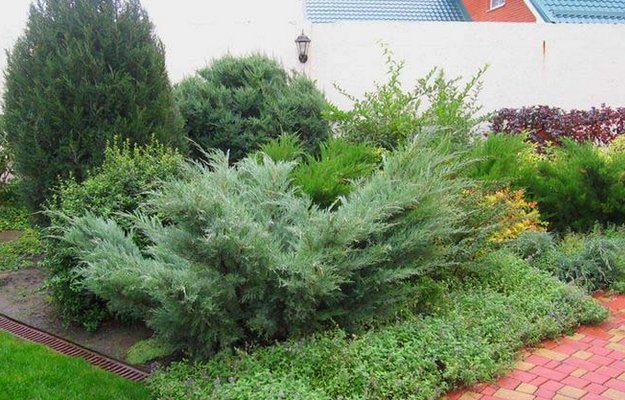
Features
Pine is a light-loving plant that adapts to the temperature conditions of the growing environment. The root system, depending on the habitat, adapts to the conditions. In arid areas, the taproot is more developed, in areas with a moderately humid climate, lateral roots develop.
The pine tree propagates by seed and grafting. Transplanting seedlings begins at 3-7 years old. Flowering begins in mid-May – the temperature is already high at this time. During this period, a cloud of “yellow dust” rises above the forest. Pollination takes place with the help of the wind, fertilization is expected next year. Begins to bear fruit from the age of 15 with a single planting, in the forest – after 40 years. The average life span of a tree is 200-300 years, in some cases it can live up to 500 years. It grows moderately, the maximum increase is expected by 15-20 years
So, the features of Scots pine: it has a good survival rate, adapts to different temperature conditions, is drought-resistant and photophilous. The root system prevents soil erosion, crumbling of old ravines and the formation of new cliffs.
Microbiota
A truly beautiful and very ancient coniferous plant. Historical references say that microbiota is one of the most ancient conifers.
This shrub is often confused with a creeping juniper, but according to its biological characteristics, it is closer to the eastern thuja.
The microbiota has a gorgeous lush crown, which reaches a height of 50-60 cm. Its graceful branches spread, rise or droop at the ends.
The branches of a coniferous shrub have the shape of an elongated flattened oval, which is a little reminiscent of thuja shoots. The needles have a scaly shape. It is dense, small (1-2 mm), bright green in color.
The needles fit tightly to the branches, in shady places they can bulge a little. In autumn, they acquire a brownish-yellow tint.
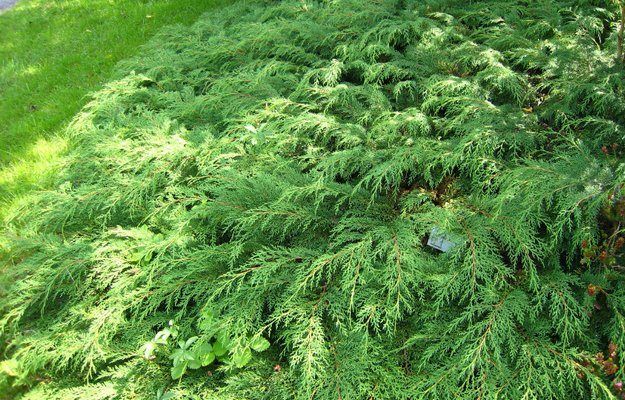
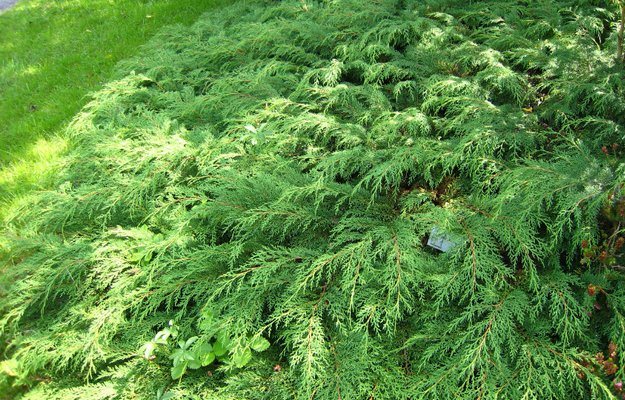
The microbiota is a dioecious plant, since female and male cones can form on the same bush. Male cones are smaller, often formed at the ends of the shoots.
Female cones are slightly larger, form on short shoots, spread out when ripe. Cones of both sexes do not appear on the shrub every year, in addition, they are small enough, so it will not be possible to contemplate them.
The annual growth of the microbiota is only 2-3 cm. In the natural habitat, the shrub is found in mountainous areas and on the coast of mountains, therefore, in decorative and landscape design, it is most often used for arranging rock gardens, alpine slides, rocky gardens, etc.
In addition, microbiota are guests of honor in many botanical gardens around the world. Since the height of the microbiota is small, it can often be seen on alleys, borders of lawn crops, terraces, etc.

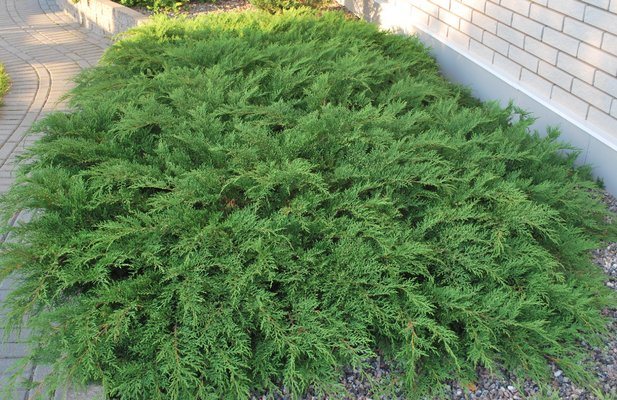
How to care?
The subsequent care of the ornamental pine involves placing the plant in a pot outdoors in the summer. The tree is left in partial shade, providing it with protection from the scorching sun’s rays. A seedling in a pot is watered daily in the warm season, the needles are sprayed from a spray bottle with settled or well water. In autumn, moisture intake is reduced, in winter it is provided only when necessary, so that the soil does not dry out.
Top dressing for young pines is needed throughout the summer and spring seasons. It is carried out monthly, making 1/2 dosage for potted plants, as well as the full recommended dosage for seedlings grown in the open field. Special ready-made mixtures for ephedra are used.
For decorative pines, see the next video.
Cypress
Cypress is a genus of evergreen conifers and shrubs. In Latin, its name sounds like Chamaecyparis. There are seven main plant species in the genus, which are found in their natural habitat in North America and East Asia.
To date, breeders have bred more than 200 species of cypress trees, which differ in a variety of decorative qualities. Some of the trees can reach a height of 70 m.
Cypress trees are often confused with cypress trees, but the latter have larger branches and needles. Among artificially bred cypress trees, there are many types of ornamental shrubs that reach a height of only 0.5-0.8 m.
The cones of the plant are small with a small amount of seeds. Cypress trees easily endure even the most severe winter frosts, however, they overcome excessive summer drought with great difficulty.
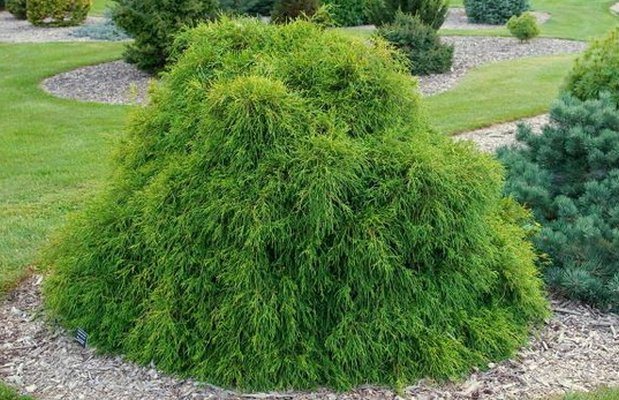
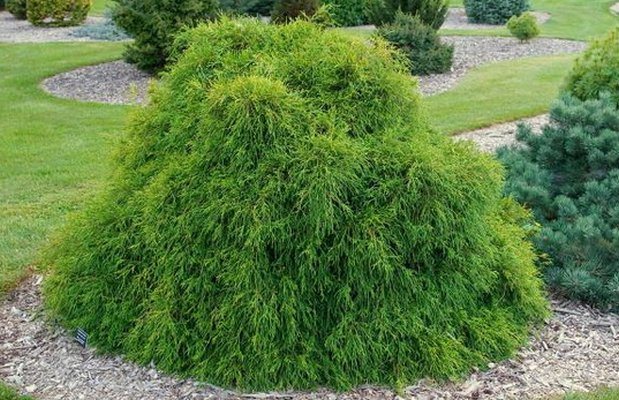
The shrub has bluish-green or yellow-green leaves (needles). Young plants have needle-like leaves, mature trees are scaly. Decorative cypress trees are of different types, each of them differs in the shape of the crown, shades of needles, and the rapidity of growth.
Important! Cypress seeds must be harvested in the fall and stored in a hermetically sealed jar at room temperature. In such conditions, seeds can be stored for 20 years.
Cypress Endelaiensis is a popular plant among lovers of decorative and landscape design. This shrub can reach a maximum height of 2.5 m. Its branches are very dense and slightly fan-shaped. Endelaiensis has beautiful needles, greenish-blue color, with opposite leaf growth.
In botanical gardens, landscape parks, on alpine slides, you can find such types of low cypress trees in the form of a bush: Sanderi, Albopikta, Contorta, Blue Seprise.
All of these plants are distinguished by a dense pyramidal or pin-shaped crown, bluish-green color of needles, slow growth and beautiful purple-violet color of needles in the autumn-winter period.
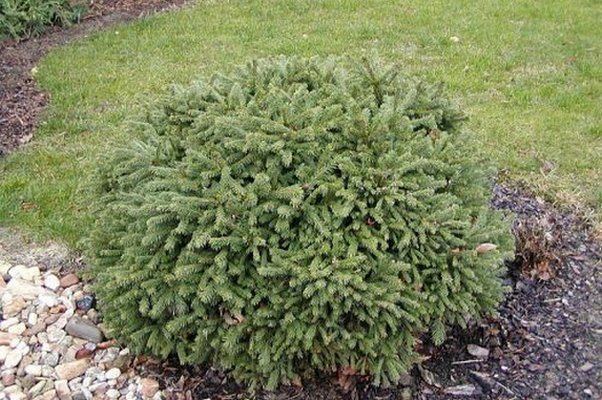
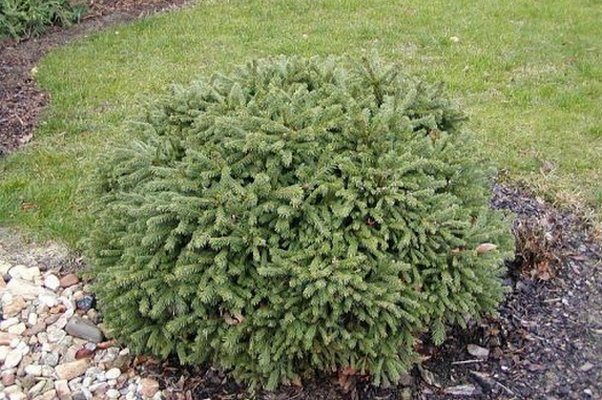
Cypress
Cypresses are a large genus of evergreen coniferous shrubs and trees, which in their natural habitat can be found only in the northern hemisphere. Evergreen cypress has been growing in Crimea for a long time, and the ancient Greeks brought it there.
This coniferous plant can be found on the Mediterranean coast, in northern and eastern Asia, as well as in North America (from Guatemala to Canada).
There are many types of cypress, which are found as decorative ornaments on alleys, terraces, and landscape parks.
Those types of cypress, which in natural conditions can grow up to 25 m in height, grow slowly at home, and with proper care they can grow only 2 m in height.
Often, these ornamental coniferous shrubs are planted in groups to create green walls and decorative hedges.
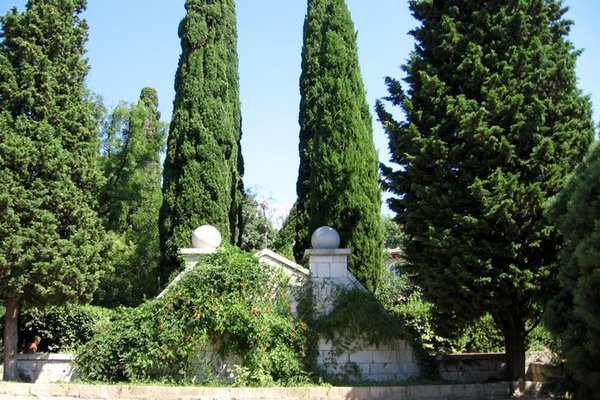
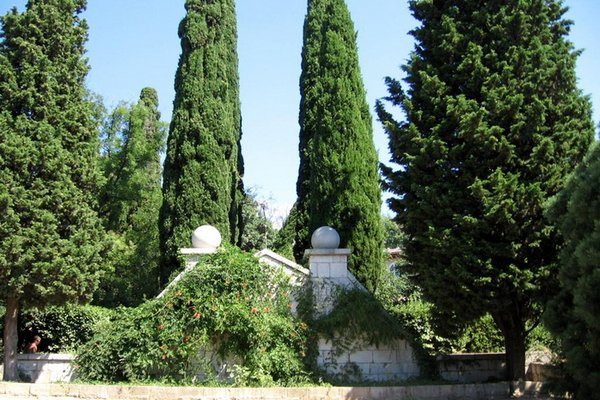
The needles on the bushes resemble the shape of the scales. It snuggles tightly to the shoots, due to which a slender and lush pyramidal crown is formed.
Some landscape designers compare the slenderness of cypress with the slenderness of a beautiful female figure. Already in the second year, cones are formed on the plant, which are painted in a bluish-green color.
After a year, the buds turn olive brown, each containing about 20 brownish seeds. The diameter of the bumps becomes 3-4 cm, but at the same time they are very dense and thick.
In the parks, you can observe nimble squirrels on cypress trees, which are trying to steal more cones, because their seeds are excellent food for lush-tailed animals.
Cypress trees are undemanding to the composition of the soil, so they are often found on the sides of roads and alleys in long and slender rows. Their branches are dense and practically do not bend under snow or in strong winds.
Cypress wood is used in shipbuilding, and its oils have found their application in pharmacology and medicine.
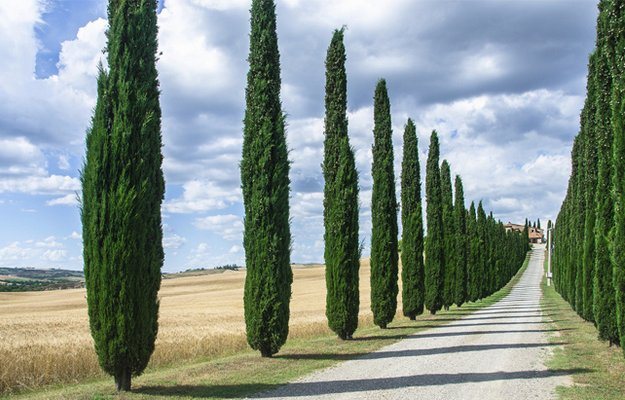
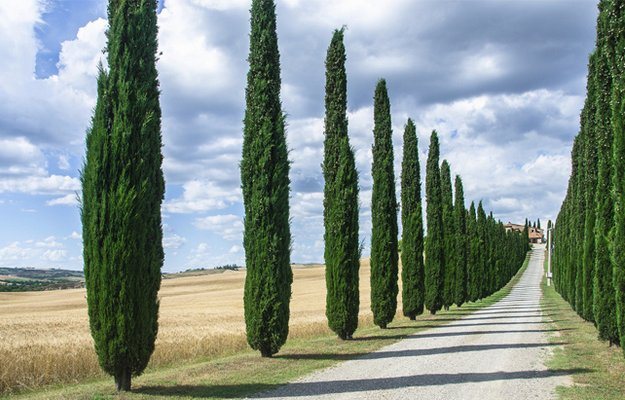
Balsam fir
This coniferous plant will make an excellent hedge among lawn plantings. Due to the fact that balsam fir has a lush and slender crown, it is often planted in groups on alleys, terraces, etc.
Fir can form a graceful and attractive crown, which will become a unique decoration of any yard, park or garden.
In its natural habitat, balsam fir is found on the rocky shores of small rivers and lakes. Due to genetic predisposition, the plant can be planted near small artificial reservoirs, in which case the harmony will be at the highest level.
The Caucasian and Korean fir are also very popular.
It should be noted that Nana and Hudsonia are considered the most popular types of balsam fir in decorative and landscape design.
But there are other varieties that differ in different colors of needles (from gray to silver), crown shape (kegle-shaped, pyramidal, cone-shaped), rapidity of growth.
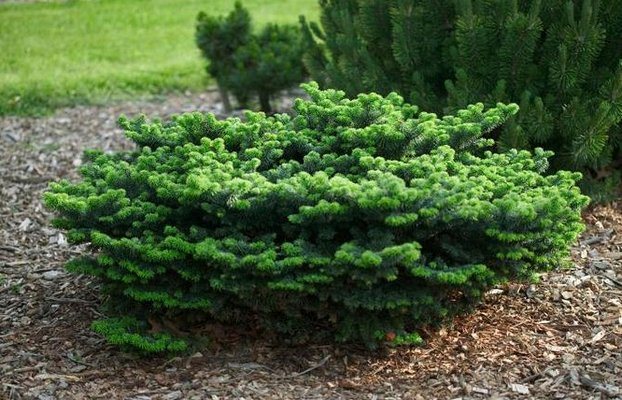
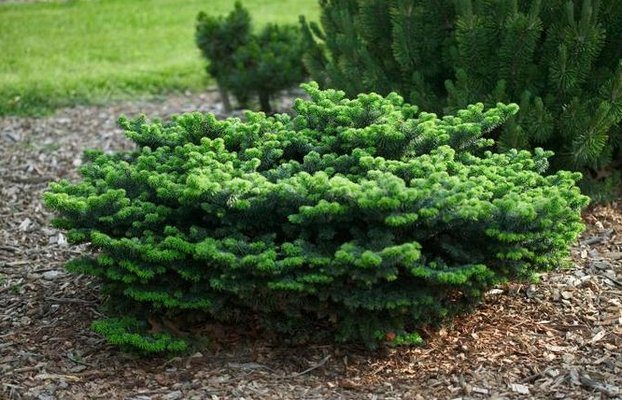
Did you know? Fir balsam, which is isolated from the bark of balsam fir, is able to cleanse and rejuvenate the body. This balm has been known since ancient times, it was actively used by the inhabitants of Kievan Rus.
The needles have a comb-like arrangement on the branches. It is slightly dull, has a greenish tint, and small white stripes are observed in the lower part. The length of the needles varies from 20 to 25 mm.
Balsam fir cones have the shape of a cylinder, which tapers at the base. Their length reaches 10 cm, width – 25 mm. The color of the bumps ranges from dark purple to olive brown.
With proper care, a coniferous plant brings decorative value for 40-50 years. In its natural habitat, balsam fir lives for about 200 years.
Yew
Yew is another representative of evergreen conifers that is distinguished by exceptional longevity. In its natural habitat (North America, East Asia and Europe), the shrub can grow for 3000 years!
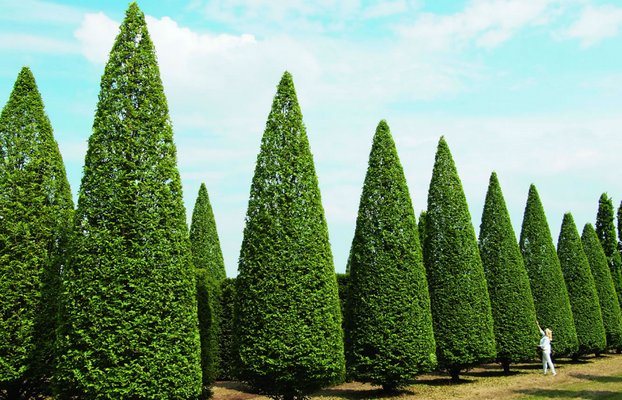
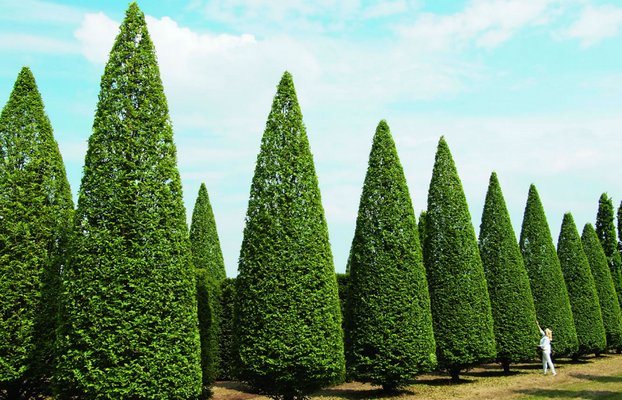
There are many varieties of yew, some of which have beautiful and lush decorative forms, the latter are large in size, not of interest to landscape designers.
In decorative arts, yews are often used in the form of shrubs or dwarf trees that do not grow more than 3 meters in height.
The yew symbolizes the strength of the spirit, it is also a symbol of overcoming death. Guides in the Yalta botanical garden often remember that the yew guarded the entrance to the kingdom of Hades for many millennia, while at the same time it looked magnificent and slender, like an ardent Cerberus with a mountain of muscles.
Yew looks gorgeous in a single fit and in an intricate composition. He will become a bright decoration and the main character of any garden, rock garden, park. Decorative needles will be the perfect backdrop for graceful rock gardens and unusual alpine slides.
Important! For planting yew, you need to use a mixture of sand and peat in a 1: 2 ratio.
This ornamental coniferous shrub has a dense crown and whorled branches. Its needles are moderately hard, alternately arranged on short petioles.
Yew fruits are cones that have a cherry-red pericarp. Ornamental types of shrubs are demanding on the composition of the soil, but these are the only conifers that can grow without much difficulty in shady places.
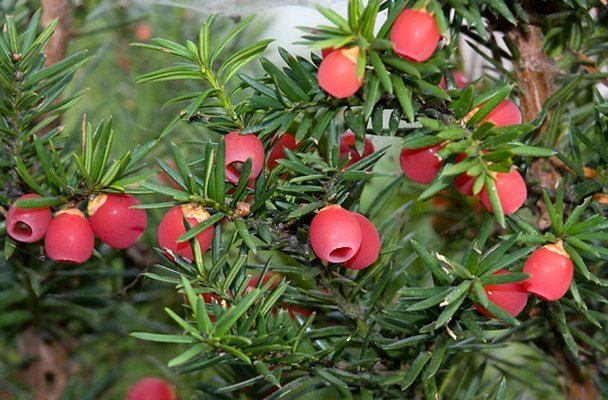

Agricultural technology for growing pine: planting, care and seed reproduction (with photo)
Growing and caring for a pine tree is not difficult. The formation of her crown occurs naturally. No trimming is needed. It is resorted to only when the top is broken or two top leaders grow at once. In this case, the top is replaced with a lateral shoot from the whorl located below, which is tied to a stake installed at the plant. To fill the space formed by the raised branch, the branches remaining in the whorl are tied with twine and pulled to the tier. After a year or two, when the new leader and the whorl are fixed in the desired position, the twine and stake are removed.
Video: Collecting pine seeds and growing them
With the development of two leaders, one of them is removed “on the ring”, and the remaining one is given a strictly vertical position with the help of a stake and twine.
The pine is very fond of washing the needles with water in the summer. You can only transplant with a clod of earth and at an early age.
Before growing pine, estimate the size of your plot. When planting, preference should be given to seedlings no more than one and a half meters high, the taller ones are more difficult to take root.
Pine can bud only in places where there are needles, best of all – on a fresh growth. Pines categorically do not grow from the stump and bare branches.
In ornamental gardening, 7 out of 12 known pine species are mainly used. Next, you can familiarize yourself with a photo and description of the types of pine trees, the most popular among gardeners. Dwarf forms, creeping and undersized are ideal for small gardens, rock gardens, for planting in the foreground of a summer cottage or personal plot.
Pine propagation is carried out by seeds, they ripen mainly in the 2nd year after flowering, the sowing material is collected in September – October until December. In some pines (Weymouth), the cones crack after ripening and fall along with the seeds. The peculiarity of the reproduction of cedar pines is that their cones do not crack, the seeds must be extracted from them. After ripening, the cones are harvested immediately, since the seeds quickly lose their germination.
Freshly harvested seeds of Weymouth pine, cedar and ordinary pine are sown in the fall in ridges, which are covered until spring. In the spring, after removing the shelter and emergence of seedlings, they are shaded.
Spring sowing is done for the seeds of Banks pine and mountain pine, subjecting them to preliminary stratification. It lasts 4-5 months. Scots pine seeds, which can also be sown in spring, are not stratified, but soaked in water for 1-2 days.
When growing pines, caring for seedlings requires shading, regular watering, shelter, weeding and loosening. Fast-growing species need such care for 1-3 years, slow-growing ones – 3-4 years. The shade is made smaller from year to year in order to harden the seedlings and accustom them to atmospheric phenomena.
To form the root system, the seedlings must be transplanted, providing them with a large area of nutrition, where intensive care is given for 5-6 years, including regular watering, washing the crowns, weeding, loosening and mulching.
These photos show the planting and care of pines of different types:

